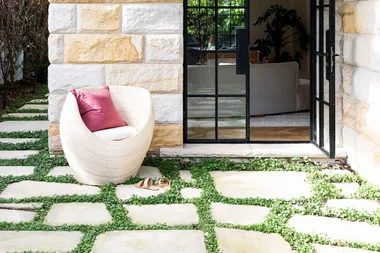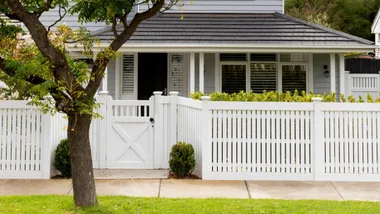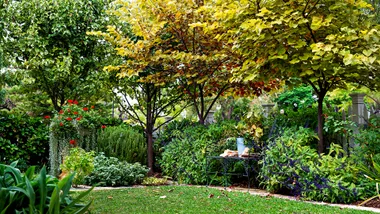Deciduous and evergreen magnolia trees are truly a sight to behold. When they spring into bloom, they make an incredible statement tree, stealing the limelight in any front garden. But it’s exactly because they are so grand, so beautiful and so eye-catching that it can be tricky to work out how to landscape around them.
Whether you’re trying to increase the value of your property by planting a magnolia or want to make an existing tree work with a new vision for your front yard, these tips are sure to inspire. Luckily, once a tree is established, magnolias are very easy to care for, providing plenty of shade in summer and fragrant flowers in spring.
Here’s how to make them work in your garden.
1. Pair with shade loving plants
Because some magnolia trees have such large canopies, the ground below may receive only dappled or indirect sunlight. Underplanting magnolias with shade-loving plants is an easy way to ensure success, and popular companion plants include clivias, peace lilies, hydrangeas and blue ginger (Dichorisandra thyrsiflora).
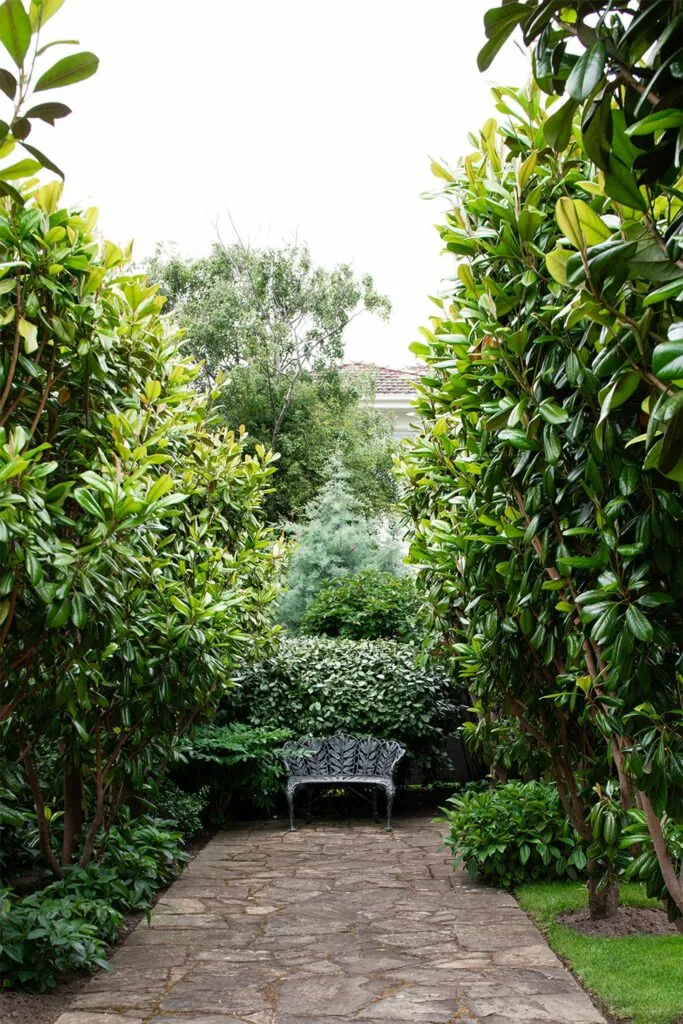
2. Underplant with spring bulbs
Create a symphony of blooms by underplanting your magnolia with spring-flowering bulbs. You can either select clashing colours for a showy springtime display, or choose flowers in a subdued shade (such as white or soft pink) that will enhance the beauty of the magnolia flowers above.
Top bulbs to consider include: daffodils, bluebells, blue muscari and snowflakes (Leoucojum).
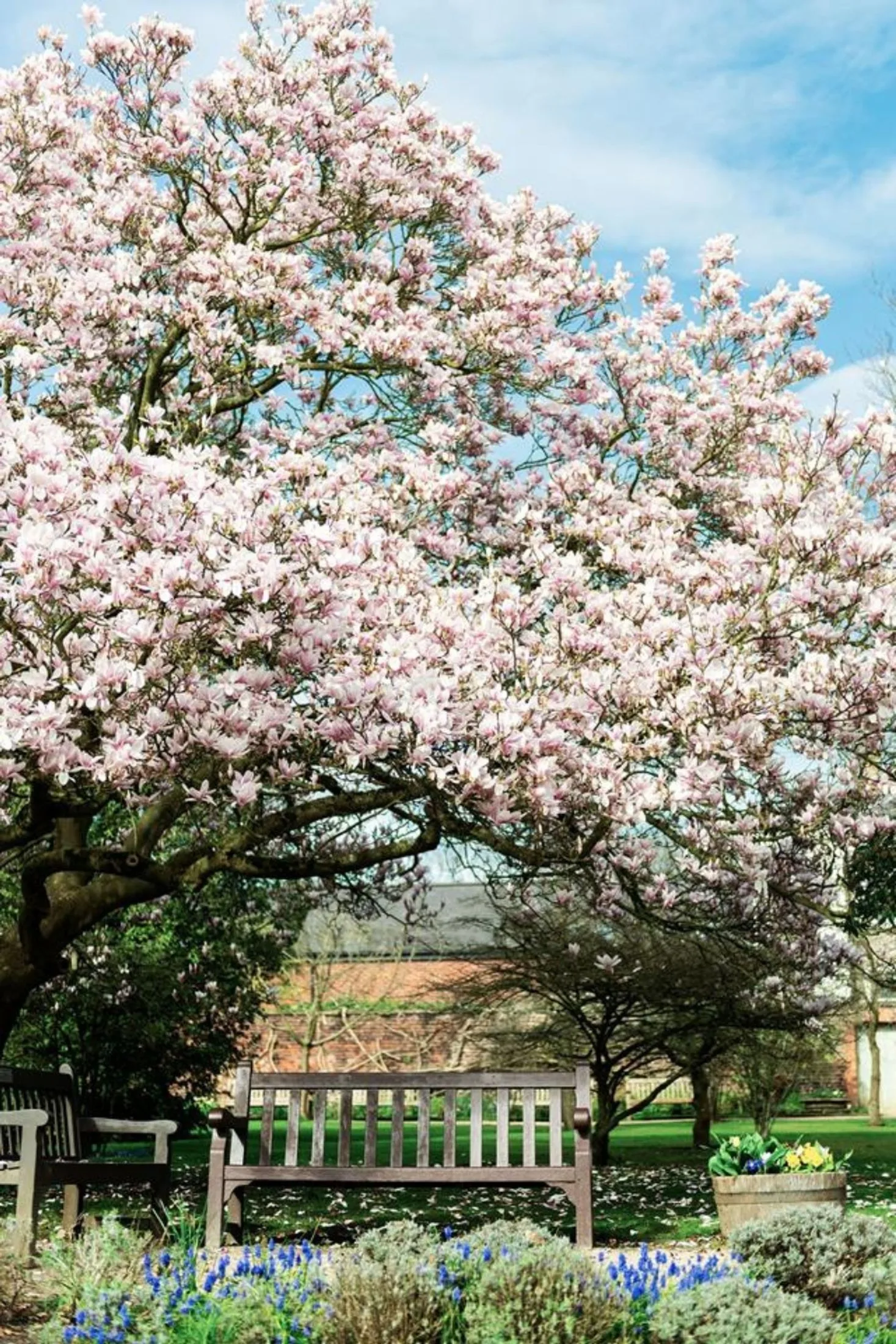
3. Surround with a perfectly manicured lawn
Magnolias are magnificent, so you may want to pare back the rest of your garden.
A beautifully manicured lawn will set the scene for a magnolia tree – just be sure to rake up fallen leaves and spent flowers to ensure your lawn receives as much sunlight as possible throughout autumn and winter.
4. Position to reduce glare from the sunlight
Magnolias thrive best when planted in full sun – preferably a position with a northerly or eastern aspect. This is also likely to be the part of your house that receives the most sunlight glare, so allow your magnolia to keep the heat out of your home by positioning it in a place that will provide shade for your windows.
For a full-sized magnolia, it’s best to plant the tree at least nine metres from the house to prevent root damage to your home. Dwarf varieties have far more compact root systems, so plant at least 2-3 metres away from your house.
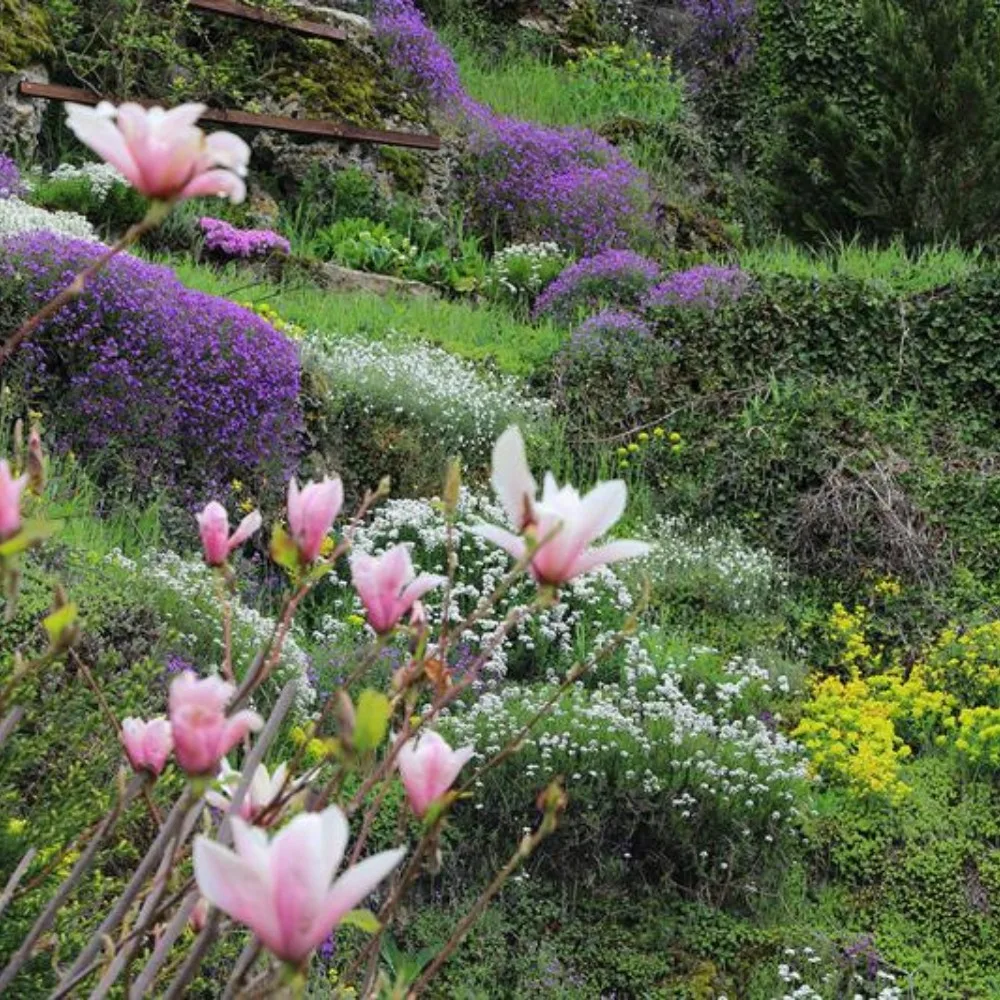
5. Add mulch
For the low-maintenance gardener, mulch is the way to go. Not only will it help keep the tree moist during the warmer months, organic mulch will also impart nutrients back into the soil, resulting in a tree that produces an abundance of blooms.
Deciduous vs evergreen magnolias
Deciduous magnolia trees (Magnolia soulangeana or saucer magnolias) are all about the drama. Throughout summer, they produce wide, deep green leaves that are excellent at repelling sunlight. In winter, the leaves drop, revealing a structural frame of branches. Springtime is showtime! This is when masses of tulip-shaped blooms will burst into life. Deciduous trees thrive best in a temperate climate in a position that receives direct sunlight.
Evergreen magnolias (Magnolia grandiflora), on the other hand, flower throughout the year and grow in most areas. Smaller varieties such as Teddy Bear Magnolia are particularly popular for their compact shape, luscious leaves and fragrant, creamy white flowers.







